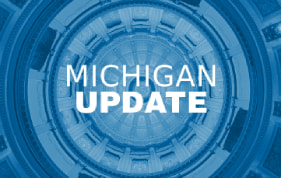HMA Federal Policy Principal Andrea Maresca, Managing Principal Gina Eckart, Principal John Volpe, and Senior Consultant Suzanne Rabideau weigh in on the recent changes and HMA experience in crisis intervention services.
1808 Results found.

CMS Changes to the Medicare Advantage Star Rating Program Drive Significant Increases to Overall Star Ratings
This week, our In Focus section highlights a Wakely white paper titled, CMS Changes to the Medicare Advantage Star Rating Program Drive Significant Increases to Overall Star Ratings. Authored by Suzanna-Grace Sayre and Dani Cronick and published January 2022, this paper outlines the CMS modifications to the 2022 Star Ratings due to COVID-19, quantifies the estimated impact on 2023 MA spending, and discusses how these changes could influence the MA market in 2023.

Medicaid Managed Care Provides Opportunities for States to Address Social Determinants of Health and Health Equity
This week, our In Focus highlights a new report prepared by Health Management Associates (HMA) on the potential for Medicaid Managed Care to enable states to address social determinants of health (SDOH) and health equity above and beyond what’s possible with traditional fee-for-service models. The report was released by Together for Better Medicaid, a coalition committed to building a better Medicaid system across the country.

MS Releases MississippiCAN, CHIP RFQ
This week, our In Focus reviews the Mississippi request for qualifications (RFQ) for the state’s traditional Mississippi Coordinated Access Network (MississippiCAN) Medicaid program and the state Children’s Health Insurance Program (CHIP). The RFQ, released by the Mississippi Division of Medicaid on December 10, 2021, seeks two to three health plans to serve roughly 480,000 individuals. This is the first time the state is seeking plans, which it refers to as Coordinated Care Organizations (CCOs), to jointly administer MississippiCAN and CHIP.

District of Columbia Releases Medicaid Managed Care RFP
This week, our In Focus section reviews the District of Columbia (DC) Medicaid managed care request for proposals (RFP), released on November 19, 2021, by the District of Columbia Department of Health Care Finance. The procurement will cover DC Healthy Families Program (DCHFP), including adults with special health care needs; District of Columbia Healthcare Alliance Program (Alliance); and Immigrant Children’s Program (ICP). DC expects to award contracts to up to three managed care organizations (MCOs), covering physical, behavioral health, and pharmacy services. Contract approval is expected by June 2022 and implementation in October 2022.

Changes and updates to quality and accreditation in health equity
While social determinants of health (SDOH) have been a topic of much discussion and a driver toward understanding and furthering health equity, definitions and approaches vary across the healthcare spectrum.

